The PNC Financial Services Group, Inc. (PNC) 8-KResults of Operations and Financial Condition
Filed: 19 Oct 11, 12:00am
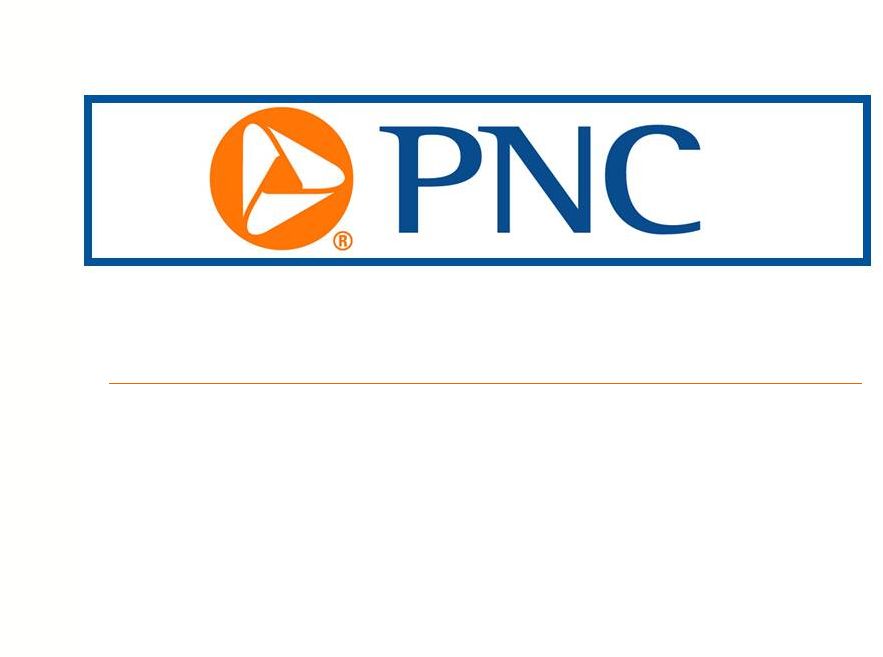 The PNC Financial Services Group, Inc. Third Quarter 2011 Earnings Conference Call October 19, 2011 Exhibit 99.2 |
 2 Cautionary Statement Regarding Forward-Looking Information and Adjusted Information This presentation includes “snapshot” information about PNC used by way of illustration. It is not intended as a full business or financial review and should be viewed in the context of all of the information made available by PNC in its SEC filings. The presentation also contains forward-looking statements regarding our outlook for earnings, revenues, expenses, capital levels, liquidity levels, asset levels, asset quality and other matters regarding or affecting PNC and its future business and operations. Forward-looking statements are necessarily subject to numerous assumptions, risks and uncertainties, which change over time. The forward-looking statements in this presentation are qualified by the factors affecting forward-looking statements identified in the more detailed Cautionary Statement included in the Appendix, which is included in the version of the presentation materials posted on our corporate website at www.pnc.com/investorevents. We provide greater detail regarding some of these factors in our 2010 Form 10-K and 2011 Form 10-Qs, including the Risk Factors and Risk Management sections of those reports, and in our subsequent SEC filings. Our forward-looking statements may also be subject to other risks and uncertainties, including those we may discuss in this presentation or in SEC filings, accessible on the SEC’s website at www.sec.gov and on PNC’s corporate website at www.pnc.com/secfilings. We have included web addresses in this presentation as inactive textual references only. Information on these websites is not part of this presentation. Future events or circumstances may change our outlook and may also affect the nature of the assumptions, risks and uncertainties to which our forward-looking statements are subject. Forward-looking statements in this presentation speak only as of the date of this presentation. We do not assume any duty and do not undertake to update forward-looking statements. Actual results or future events could differ, possibly materially, from those anticipated in forward-looking statements, as well as from historical performance. In this presentation, we sometimes refer to adjusted results to help illustrate the impact of certain types of items. This information supplements our results as reported in accordance with GAAP and should not be viewed in isolation from, or a substitute for, our GAAP results. We believe that this additional information and the reconciliations we provide may be useful to investors, analysts, regulators and others as they evaluate the impact of these respective items on our results for the periods presented due to the extent to which the items are not indicative of our ongoing operations. We may also provide information on pretax pre-provision earnings (total revenue less noninterest expense) and on tangible book value per share (calculated as book value per share less goodwill and other intangible assets per share), as we believe that pretax pre-provision earnings, a non-GAAP measure, is useful as a tool to help evaluate the ability to provide for credit costs through operations, and that tangible book value per share, a non-GAAP measure, is useful as a tool to help evaluate the amount, on a per share basis, of intangible assets included in book value. Where applicable, we provide GAAP reconciliations for such additional information, including in the Appendix. In certain discussions, we may also provide information on yields and margins for all interest-earning assets calculated using net interest income on a taxable- equivalent basis by increasing the interest income earned on tax-exempt assets to make it fully equivalent to interest income earned on taxable investments. We believe this adjustment may be useful when comparing yields and margins for all earning assets. We may also use annualized, proforma, estimated or third party numbers for illustrative or comparative purposes only. These may not reflect actual results. This presentation may also include discussion of other non-GAAP financial measures, which, to the extent not so qualified therein or in the Appendix, is qualified by GAAP reconciliation information available on our corporate website at www.pnc.com under “About PNC–Investor Relations.” |
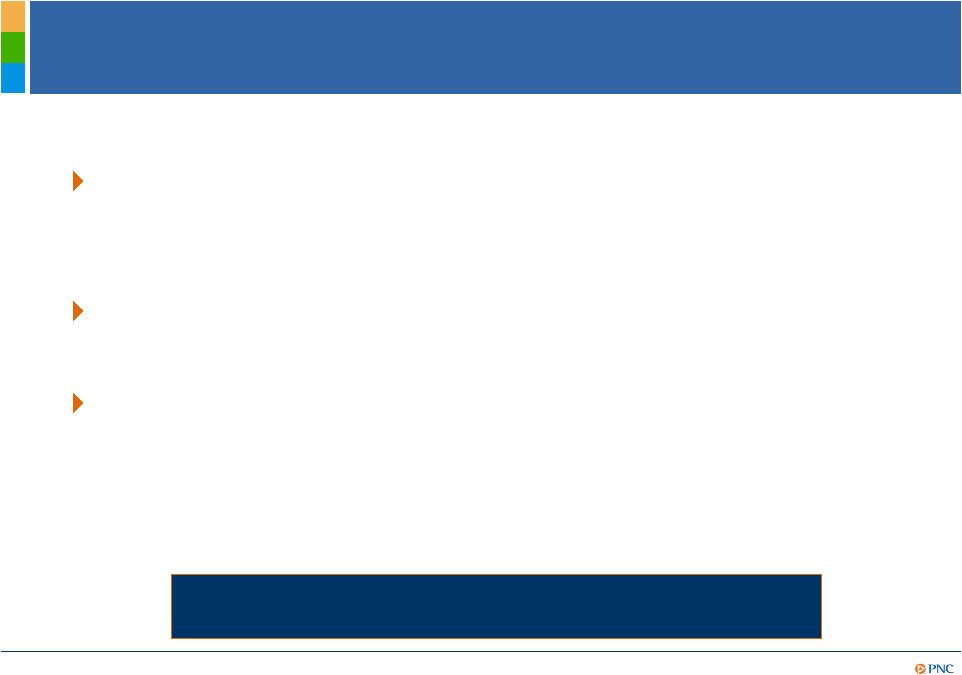 3 Today’s Discussion Significant 3Q11 achievements and financial highlights Exceptional client growth Positioned to deliver long-term shareholder value PNC Continues to Build a Great Company. PNC Continues to Build a Great Company. |
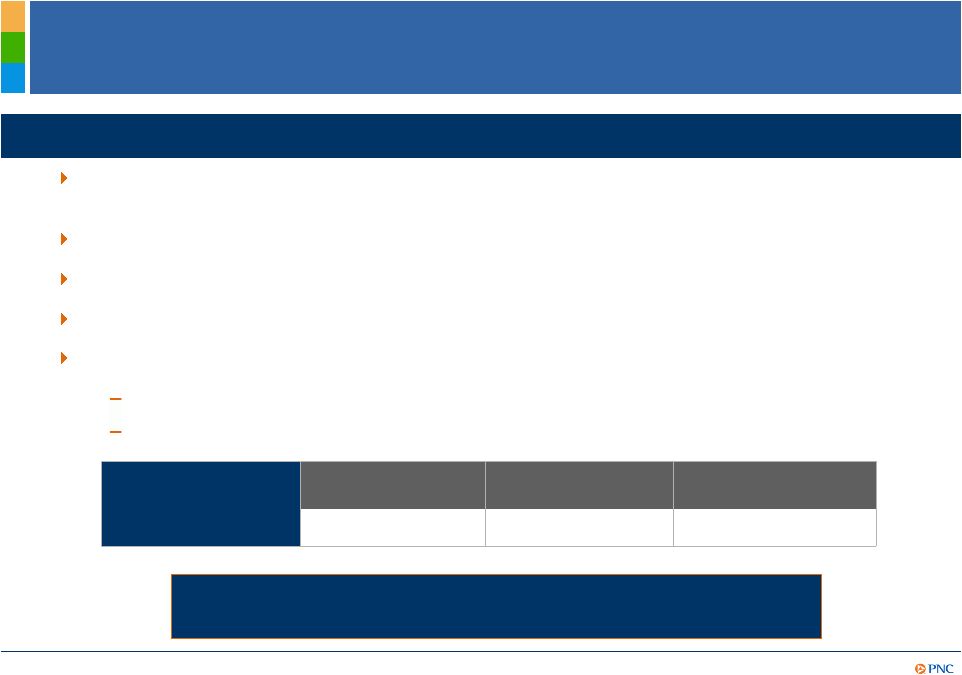 4 Significant 3Q11 Achievements PNC Is Positioned to Deliver Even Greater Shareholder Value. PNC Is Positioned to Deliver Even Greater Shareholder Value. 3Q11 financial summary Net income Diluted EPS from net income Return on average assets $834 million $1.55 1.24% Delivered strong financial results through exceptional client growth across businesses and markets Grew commercial and consumer loans Maintained a high quality balance sheet, improved overall credit quality Disciplined expense management Continued to maintain strong capital levels and ratios and liquidity positions 3Q11 highlights Issued $1 billion preferred stock Issued $1.25 billion debt |
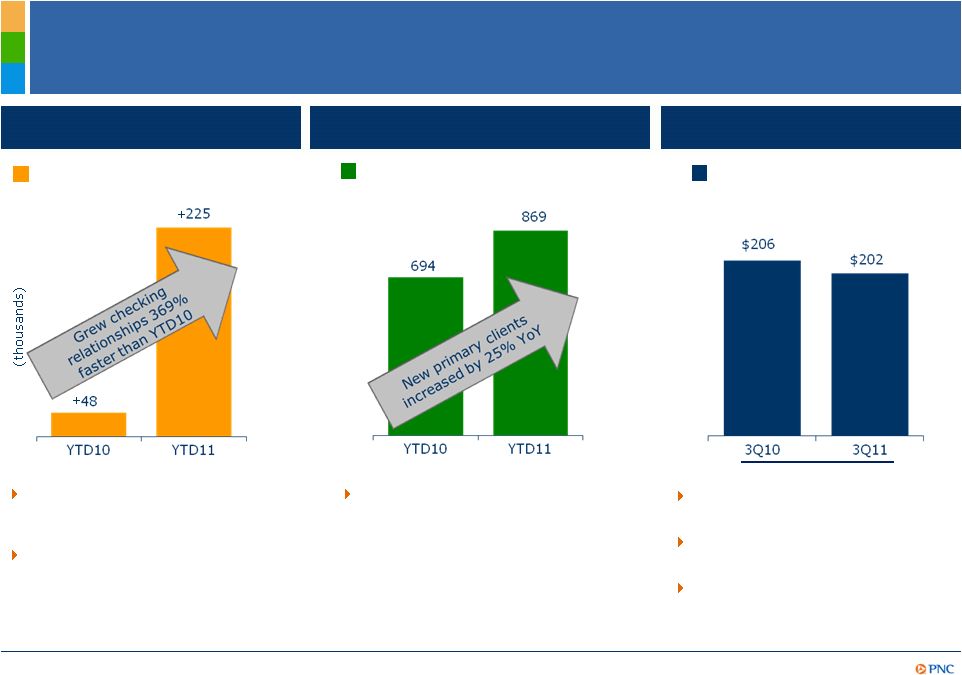 (1) Organic growth refers to consumer and small business accounts excluding 32,000 relationships acquired by acquisition in 2Q11. (2) Organic growth excludes 3,000 customer accounts acquired by acquisition in 2Q11. (3) Primary client relationships are defined as client relationships with annual revenue generation of $10,000 or more. (4) New client sales referred to AMG by Retail Banking or C&IB. Assets under administration (billions) YTD11 referral sales 4 up 86% vs. YTD10 YTD11 new primary clients³ up 34% vs. YTD10 Total sales have increased by 38% for comparable year over year periods Ahead of pace to exceed goal of 1,000 new primary clients YTD11 annualized organic growth of 5.5%, greater than 1.2% footprint population growth Active online bill payment customers showed organic growth² of 13% from 3Q10, 10% from 4Q10 Period end Corporate Banking new primary clients 3 Organic checking relationship growth 1 Retail Banking Corporate & Institutional Banking Asset Management Group Focused on Growing Client Relationships 5 |
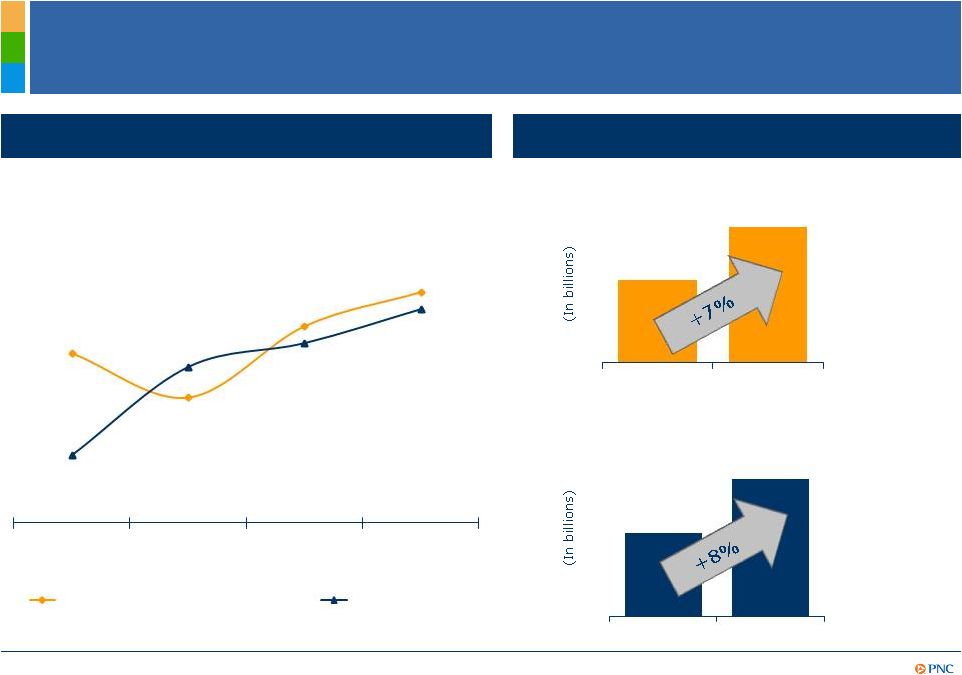 6 Corporate and Institutional Banking Loan Momentum Linked quarter change in loans and commitments Year over year loan growth C&IB Loans C&IB Loan Commitments Loan and commitment values are average balances. $63 $68 4Q10 3Q11 $130 $140 4Q10 3Q11 2.0% 0.7% 2.8% 3.8% -1.0% 1.6% 2.3% 3.3% 4Q10 1Q11 2Q11 3Q11 C&IB Loan Commitments C&IB Loans |
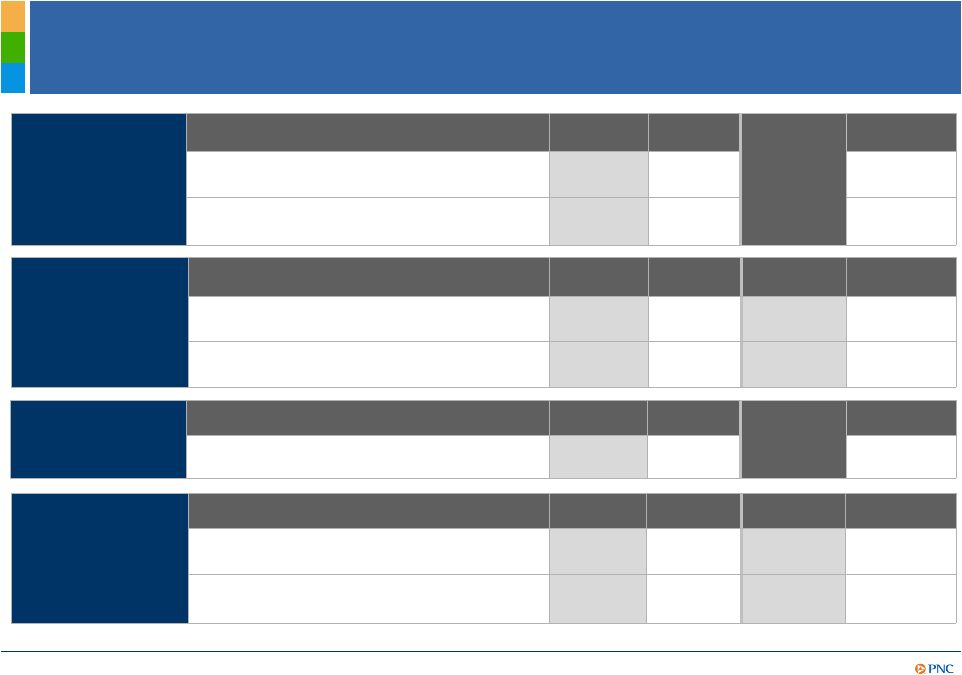 7 Financial Performance Balance Sheet Growth 3Q11 2Q11 4Q10 Loans ($ billions) $155 $150 $151 Deposits ($ billions) $188 $182 $183 Performance Measures 3Q11 2Q11 YTD11 YTD10 Return on average assets 1.24% 1.40% 1.31% 1.13% Return on Tier 1 common capital 1,2 14.1% 16.1% 14.7% 14.7% (1) 3Q11 Tier 1 common capital ratio is period-end Tier 1 common capital divided by period-end risk weighted assets and is estimated. (2) Return on Tier 1 common capital calculated as annualized net income divided by estimated period-end Tier 1 common capital. Further information is provided in the Appendix. (3) YTD10 is adjusted to exclude the $328 million after-tax gain on the sale of GIS. YTD10 reported net income and earnings per diluted common share were $2,577 million and $4.24, respectively, and return on average assets and return on Tier 1 common capital were 1.30% and 16.9%, respectively. Further information is provided in the Appendix. Strong Earnings 3Q11 2Q11 YTD11 YTD10 Net income ($ millions) $834 $912 $2,578 $2,249 Earnings per diluted common share $1.55 $1.67 $4.79 $3.62 Capital Adequacy 3Q11 2Q11 4Q10 Tier 1 common capital ratio 10.5% 10.5% 9.8% 1 3 3 |
 8 A Higher Quality, Differentiated Balance Sheet Change from: Category (billions) Sep. 30, 2011 Jun. 30, 2011 Dec. 31, 2010 Total investment securities $62.1 $2.7 $(2.2) Core commercial loans 67.7 3.6 7.0 Core commercial real estate 15.4 0.2 (1.0) Core consumer loans 58.5 0.9 (0.2) Distressed loans 12.9 (0.5) (1.9) Total loans 154.5 4.2 3.9 Other assets 52.9 (0.5) 3.5 Total assets $269.5 $6.4 $5.2 Transaction deposits $143.0 $5.9 $8.4 Retail CDs 32.4 (2.0) (5.0) Other 12.3 1.9 0.9 Total deposits 187.7 5.8 4.3 Borrowed funds, other 47.6 (1.4) (3.1) Shareholders’ equity 34.2 2.0 4.0 Total liabilities and equity $269.5 $6.4 $5.2 Loans increased $4 billion or 3% linked-quarter driven by commercial and consumer loans Securities increased $3 billion, adding primarily agency residential mortgage-backed securities Transaction deposits increased $6 billion or 4% linked-quarter reflecting increased commercial liquidity Retail CDs declined $2 billion linked-quarter reflecting expected run-off of higher cost CDs Equity increased $2 billion due to retained earnings and $1 billion preferred stock issuance Highlights (1) Excludes loans assigned to the Distressed Assets Portfolio business segment. (2) Represents loans assigned to the Distressed Assets Portfolio business segment. 2 1 1 1 |
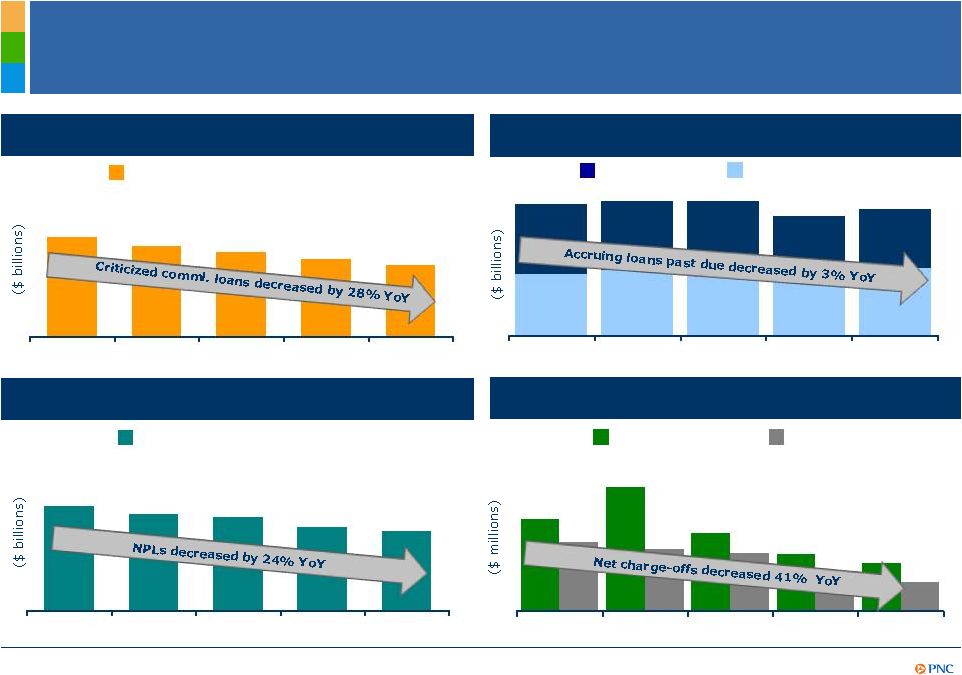 9 Credit Trends Continue to Improve Nonperforming loans 2,4 Provision and net charge-offs Criticized commercial loans 30-89 Days 90 Days + Accruing loans past due 2,3 As of quarter end except net charge-offs and provision, which are for the quarter. (1) Criticized loans are ones that we consider “special mention,” “substandard’” or “doubtful”. (2) Loans acquired from National City that were impaired are not included as they were recorded at estimated fair value when acquired and are currently considered performing loans due to the accretion of interest in purchase accounting. (3) Includes loans that are government guaranteed/insured, primarily residential mortgages. These loans totaled $2.8 billion in 3Q11. (4) Does not include loans held for sale or foreclosed and other assets. Effective in 2011, excludes residential real estate loans accounted for under the fair value option. Criticized Commercial loans Provision Net charge-offs Total nonperforming loans $4.8 $4.5 $4.3 $3.9 $3.7 $15.0 $13.7 $12.7 $11.7 $10.8 3Q10 4Q10 1Q11 2Q11 3Q11 $2.6 $2.7 $2.6 $2.6 $2.7 $1.8 $1.8 $1.9 $1.5 $1.6 3Q10 4Q10 1Q11 2Q11 3Q11 3Q10 4Q10 1Q11 2Q11 3Q11 $614 $791 $533 $414 $365 $486 $442 $421 $280 $261 3Q10 4Q10 1Q11 2Q11 3Q11 1 |
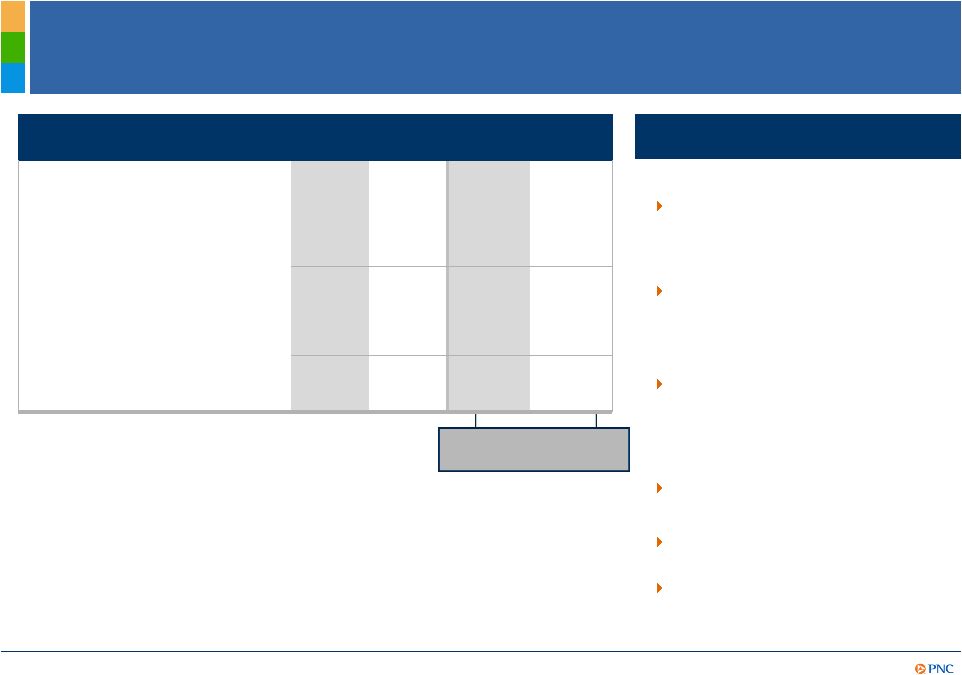 10 Net Interest Income and Provision Trends (millions) 3Q11 2Q11 YTD11 YTD10 Core NII 1 $1,883 $1,860 $5,638 $5,724 Purchase accounting accretion 2 292 290 863 1,305 Total NII $2,175 $2,150 $6,501 $7,029 Provision 261 280 962 2,060 Provision-adjusted NII $1,914 $1,870 $5,539 $4,969 Highlights Quarterly: Total NII improved from 2Q11 due to growth in core NII 1 and better than expected cash recoveries on commercial impaired loans Provision improved modestly as overall credit quality continued to improve YTD: Provision-adjusted NII 3 increased 11% as significantly lower provision more than offset the expected decline in purchase accounting accretion Core NII 1 was stable Fourth Quarter Outlook: NII expected to remain stable with core NII continuing to grow Provision expected to remain stable with 3Q11 Provision-adjusted NII 3 increased 11% YoY 3 (1) Core net interest income is total net interest income, as reported, less related purchase accounting accretion (scheduled and cash recoveries). (2) Includes scheduled purchase accounting accretion and cash recoveries. Cash recoveries reflects cash received in excess of recorded investment from sales or payoffs of impaired commercial loans. (3) Provision-adjusted net interest income is total net interest income, as reported, less provision. |
 11 Client Growth and Sales Momentum Provide Opportunities to Increase Noninterest Revenue Highlights Quarterly: Asset management and consumer services remained stable Corporate services declined primarily due to reduced value of CMSR from lower interest rates Residential mortgage increased due to higher loan sales and MSR hedge gains Other decreased primarily due to lower asset values YTD: Noninterest income, adjusted for the impact of regulatory changes, increased 4% Fourth Quarter Outlook: Consumer services fees expected to be reduced by approximately $75 million or 9 cents per share in 4Q11 due to regulatory changes on debit card interchange fees (1) Asset management fees include the Asset Management Group and BlackRock. (2) Corporate services includes impairment charges/recoveries related to commercial mortgage servicing rights. (millions) 3Q11 2Q11 YTD11 YTD10 Asset management 1 $287 $288 $838 $751 Consumer services 330 333 974 939 Corporate services 2 187 228 632 712 Residential mortgage 198 163 556 542 Deposit service charges 140 131 394 573 Client fee income $1,142 $1,143 $3,394 $3,517 Net gains on sales of securities less net OTTI 33 43 79 77 Other 194 266 803 650 Total noninterest income $1,369 $1,452 $4,276 $4,244 Impact of Regulation E and related regulatory changes $230 $90 Total adjusted noninterest income $4,506 $4,334 Adjusted noninterest income increased 4% YoY |
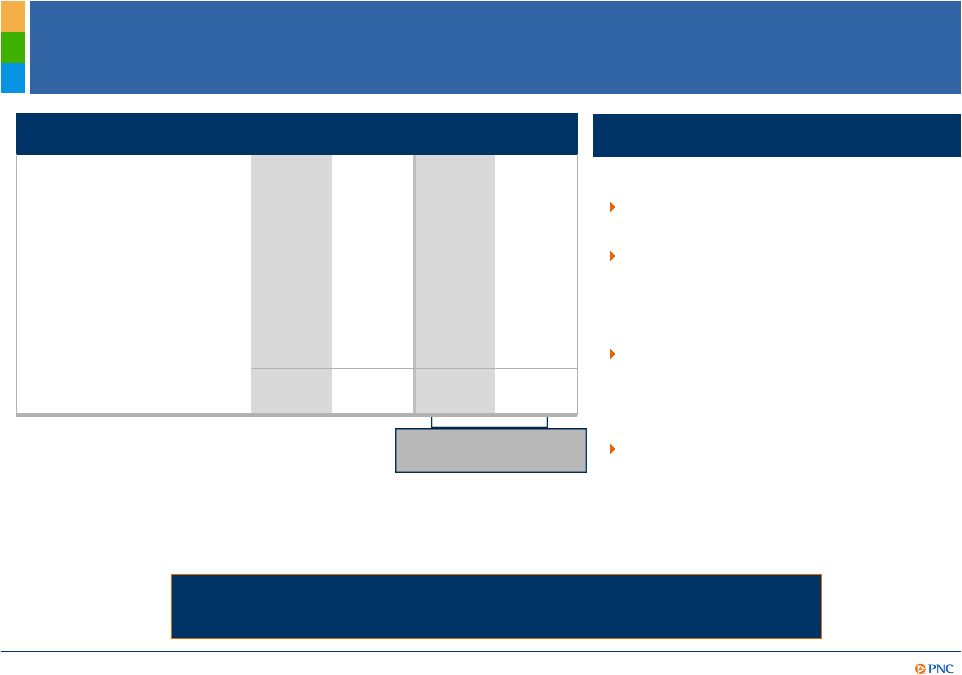 12 Well–Controlled Expenses While Investing for Growth PNC is Committed to Disciplined Expense Management. PNC is Committed to Disciplined Expense Management. Highlights Quarterly: Personnel, Occupancy, Equipment and Other expenses remain well-managed Marketing increased due to elevated advertising costs associated with new products and market expansion YTD: Noninterest expense increased 2% due to accruals for legal contingencies and foreclosure-related costs Fourth Quarter Outlook: Other noninterest expenses expected to be increased by $198 million or 24 cents per share in 4Q11, due to non- cash charge associated with calling $750 million of trust preferred securities (millions) 3Q11 2Q11 YTD11 YTD10 Personnel $949 $976 $2,914 $2,874 Occupancy 171 176 540 536 Equipment 159 158 484 492 Marketing 72 63 175 196 Other 789 803 2,273 2,175 Total noninterest expense $2,140 $2,176 $6,386 $6,273 Noninterest expense increased 2% YoY |
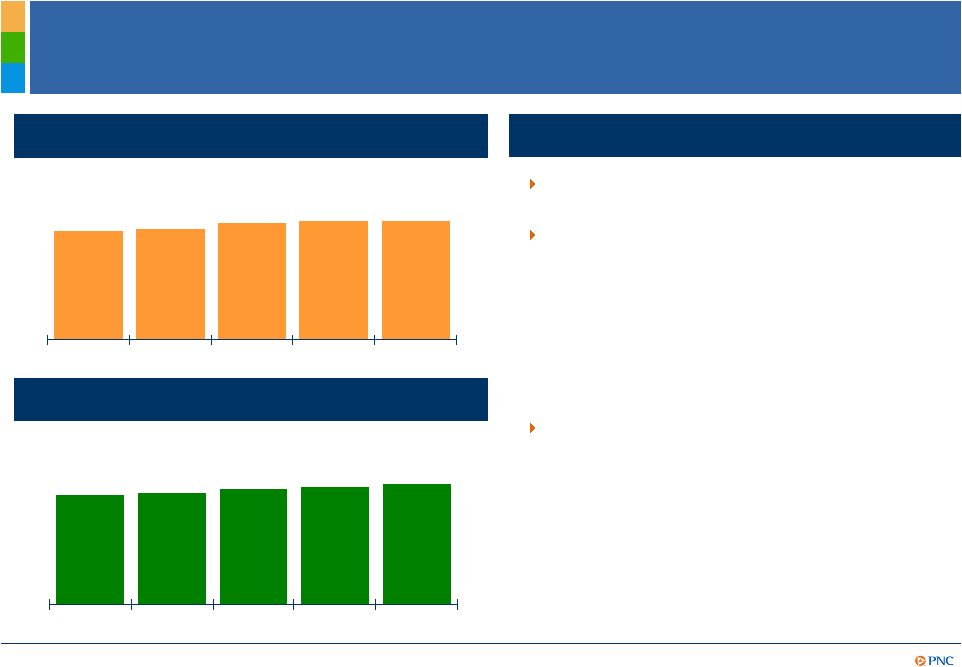 13 Strong Capital and Liquidity Position Highlights Tier 1 ratio increased primarily due to $1 billion preferred stock issuance Proforma Basel III Tier 1 common ratio estimated to be between 8.0-8.5% at December 31, 2012 2 – Significant upside potential assuming final capital requirements reflect the inherent risk profile in our sub-investment grade securities – Continue to assume no common stock issuance to fund pending acquisition of RBC Bank (USA) Strong liquidity position – Loan-to-deposit ratio of 82% – Parent company two year liquidity coverage 3 of 168% Tier 1 common ratio Tier 1 risk-based ratio 1 9.6% 9.8% 10.3% 10.5% 10.5% 3Q10 4Q10 1Q11 2Q11 3Q11 1 11.9% 12.1% 12.6% 12.8% 13.1% 3Q10 4Q10 1Q11 2Q11 3Q11 Tier 1 common ratio and Tier 1 Risk-based ratio as of quarter end. (1) Estimated. (2) Proforma estimate is based on PNC’s Tier 1 common ratio of 10.5% as of 9/30/11, and includes an assumed benefit of 1.3%, which reflects First Call 2011 and 2012 estimates and current dividend payout, as well as an assumed decrease of 3.3%-3.8%, which reflects assumptions regarding credit, operating and market risk under Basel II, the treatment of BlackRock under Basel III and sub-investment grade securities (assuming no AOCI double counting) under Basel II, and assumes no common share issuance for the pending RBC Bank (USA) acquisition. This estimate is subject to further regulatory guidance and clarity. (3) Parent company liquidity coverage defined as liquid assets divided by funding obligations within a two year period. |
 14 Outlook for 2012 Compared with Estimated 2011 1 PNC stand-alone: Stable NII assuming low interest rates and no loan growth Increasing fees driven by client growth, despite regulatory impacts Lower credit costs Flat expenses 2 RBC Bank (USA): Immediately accretive assuming no capital issuance PNC is Positioned to Deliver Strong Results in 2012. PNC is Positioned to Deliver Strong Results in 2012. (1) Refer to the Cautionary Statement in the Appendix, including assumptions. Estimated 2011 reflects reported results through 3Q11 and 4Q11 management estimates. (2) Does not include legal and regulatory related contingencies, and Flagstar and RBC Bank (USA) integration and operating costs, along with capital actions related to trust preferred securities. |
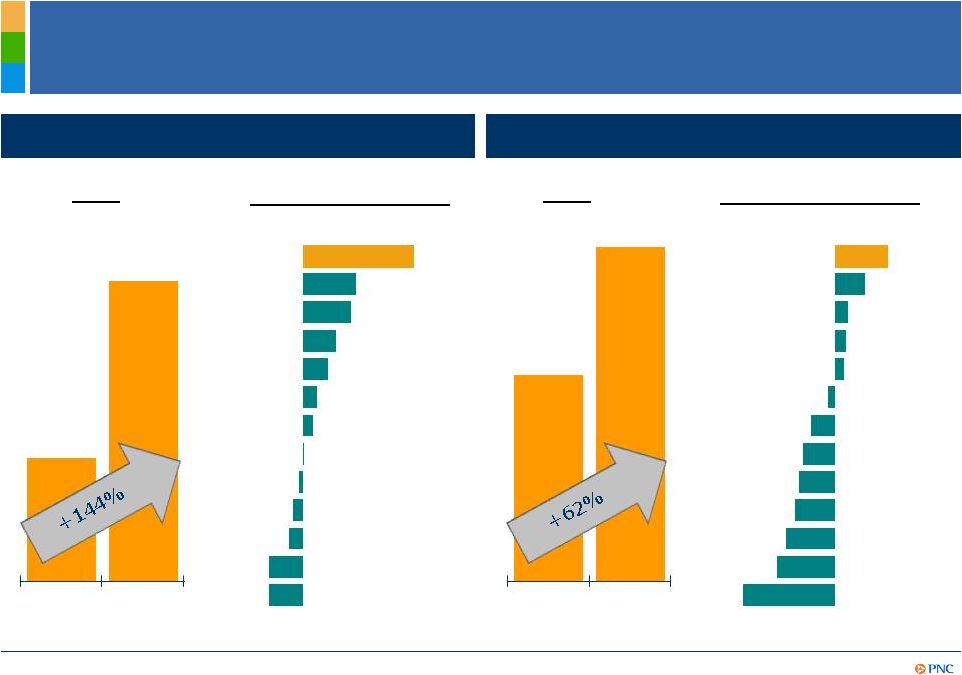 15 % change 2007-2011 Delivering Long-Term Shareholder Value Tangible book value per share Pretax pre-provision earnings per share PNC PNC 4 PNC Peer 1 Peer 2 Peer 3 Peer 4 Peer 5 Peer 6 Peer 7 Peer 8 Peer 9 Peer 10 Peer 11 Peer 12 PNC Peer 1 Peer 2 Peer 3 Peer 4 Peer 5 Peer 6 Peer 7 Peer 8 Peer 9 Peer 10 Peer 11 Peer 12 Peer banks identified in the Appendix. Source for banks other than PNC: SNL DataSource. (1) Tangible book value per share calculated as book value per share less goodwill and other intangible assets. Further information is provided in the Appendix. (2) Percentage change for 2007 to six months ended June 30, 2011, annualized, respectively. (3) Pretax, pre-provision earnings are from continued operations and are calculated as total revenue less noninterest expense. Further information is provided in the Appendix. (4) 2011 represents pretax pre-provision earnings for the six months ended June 30, 2011, annualized, divided by the number of shares outstanding as of June 30, 2011. % change 2007-2011 2 2 1 3 $17.58 $42.93 12/31/07 6/30/11 144% 69% 63% 43% 32% 18% 13% 1% -6% -14% -19% -45% -46% $7.06 $11.45 2007 2011 62% 37% 16% 14% 11% -8% -28% -37% -42% -47% -58% -68% -109% |
 16 Cautionary Statement Regarding Forward-Looking Information Appendix This presentation includes “snapshot” information about PNC used by way of illustration and is not intended as a full business or financial review. It should not be viewed in isolation but rather in the context of all of the information made available by PNC in its SEC filings. We also make statements in this presentation, and we may from time to time make other statements, regarding our outlook for earnings, revenues, expenses, capital levels, liquidity levels, asset quality and other matters regarding or affecting PNC and its future business and operations that are forward-looking statements within the meaning of the Private Securities Litigation Reform Act. Forward-looking statements are typically identified by words such as “believe,” “plan,” “expect,” “anticipate,” “see,” “intend,” “outlook,” “project,” “forecast,” “estimate,” “goal,” “will,” “should” and other similar words and expressions. Forward-looking statements are subject to numerous assumptions, risks and uncertainties, which change over time. Forward-looking statements speak only as of the date made. We do not assume any duty and do not undertake to update forward-looking statements. Actual results or future events could differ, possibly materially, from those anticipated in forward-looking statements, as well as from historical performance. Our forward-looking statements are subject to the following principal risks and uncertainties. •Our businesses, financial results and balance sheet values are affected by business and economic conditions, including the following: o Changes in interest rates and valuations in debt, equity and other financial markets. o Disruptions in the liquidity and other functioning of U.S. and global financial markets. o The impact on financial markets and the economy of the downgrade by Standard & Poor’s of U.S. Treasury obligations and other U.S. government-backed debt, as well as issues surrounding the level of U.S. and European government debt and concerns regarding the credit worthiness of certain sovereign governments in Europe. o Actions by Federal Reserve, U.S. Treasury and other government agencies, including those that impact money supply and market interest rates. o Changes in customers’, suppliers’ and other counterparties’ performance and creditworthiness. o Slowing or failure of the current moderate economic recovery. o Continued effects of aftermath of recessionary conditions and uneven spread of positive impacts of recovery on the economy and our counterparties, including adverse impacts on levels of unemployment, loan utilization rates, delinquencies, defaults and counterparty ability to meet credit and other obligations. o Changes in customer preferences and behavior, whether due to changing business and economic conditions, legislative and regulatory initiatives, or other factors. •Our forward-looking financial statements are subject to the risk that economic and financial market conditions will be substantially different than we are currently expecting. These statements are based on our current view that the modest economic expansion will persist in the year ahead and interest rates will remain very low. |
 17 Cautionary Statement Regarding Forward-Looking Information (continued) Appendix Legal and regulatory developments could have an impact on ability to operate our businesses, financial condition, results of operations, competitive position, reputation, or pursuit of attractive acquisition opportunities. Reputational impacts could affect matters such as business generation and retention, liquidity, funding, and ability to attract and retain management. These developments could include: o Changes resulting from legislative and regulatory reforms, including broad-based restructuring of financial industry regulation and changes to laws and regulations involving tax, pension, bankruptcy, consumer protection, and other industry aspects, and changes in accounting policies and principles. We will be impacted by extensive reforms provided for in the Dodd-Frank Wall Street Reform and Consumer Protection Act (the “Dodd-Frank Act”) and otherwise growing out of the recent financial crisis, the precise nature, extent and timing of which, and their impact on us, remains uncertain. o Changes to regulations governing bank capital and liquidity standards, including due to the Dodd-Frank Act and to Basel III initiatives. o Unfavorable resolution of legal proceedings or other claims and regulatory and other governmental investigations or other inquiries. In addition to matters relating to PNC’s business and activities, such matters may include proceedings, claims, investigations, or inquiries relating to pre acquisition business and activities of acquired companies, such as National City. These matters may result in monetary judgments or settlements or other remedies, including fines, penalties, restitution or alterations in our business practices, and in additional expenses and collateral costs, and may cause reputational harm to PNC. o Results of regulatory examination and supervision process, including our failure to satisfy requirements of agreements with governmental agencies. o Impact on business and operating results of any costs associated with obtaining rights in intellectual property claimed by others and of adequacy of our intellectual property protection in general. Business and operating results are affected by our ability to identify and effectively manage risks inherent in our businesses, including, where appropriate, through effective use of third-party insurance, derivatives, and capital management techniques, and to meet evolving regulatory capital standards. In particular, our results currently depend on our ability to manage elevated levels of impaired assets. Business and operating results also include impacts relating to our equity interest in BlackRock, Inc. and rely to a significant extent on information provided to us by BlackRock. Risks and uncertainties that could affect BlackRock are discussed in more detail by BlackRock in SEC filings. Our planned acquisition of RBC Bank (USA) presents us with risks and uncertainties related both to the acquisition transaction itself and its integration into PNC after closing, including: o Closing is dependent on, among other things, receipt of regulatory and other applicable approvals, the timing of which cannot be predicted with precision at this point and which may not be received at all. The impact of closing on PNC’s financial statements will be affected by the timing of the transaction. o The transaction (including integration of RBC Bank (USA)’s businesses) may be substantially more expensive to complete than anticipated. Anticipated benefits, including cost savings and strategic gains, may be significantly harder or take longer to achieve than expected or may not be achieved in their entirety as a result of unexpected factors or events. o Our ability to achieve anticipated results from this transaction is dependent also on the following factors, in part related to the state of economic and financial markets: the extent of credit losses in the acquired loan portfolios and the extent of deposit attrition. Also, litigation and governmental investigations that may be filed or commenced, as a result of this transaction or otherwise, could impact the timing or realization of anticipated benefits to PNC. |
 18 Cautionary Statement Regarding Forward-Looking Information (continued) Appendix o Integration of RBC Bank (USA)’s business and operations into PNC, which will include conversion of RBC Bank (USA)’s different systems and procedures, may take longer than anticipated or be more costly than anticipated or have unanticipated adverse results relating to RBC Bank (USA)’s or PNC’s existing businesses. PNC’s ability to integrate RBC Bank (USA) successfully may be adversely affected by the fact that this transaction will result in PNC entering several markets where PNC does not currently have any meaningful retail presence. •In addition to the planned RBC Bank (USA) transaction, we grow our business in part by acquiring from time to time other financial services companies, financial services assets and related deposits. These other acquisitions, including our planned acquisition of branches and related deposits in metropolitan Atlanta, Georgia from Flagstar Bank, FSB, often present risks and uncertainties analogous to those presented by the RBC Bank (USA) transaction, as well as, in some cases, with risks related to entering into new lines of business. •Competition can have an impact on customer acquisition, growth and retention and on credit spreads and product pricing, which can affect market share, deposits and revenues. Industry restructuring in the current environment could also impact our business and financial performance through changes in counterparty creditworthiness and performance and in competitive and regulatory landscape. Our ability to anticipate and respond to technological changes can also impact our ability to respond to customer needs and meet competitive demands. •Business and operating results can also be affected by widespread disasters, dislocations, terrorist activities or international hostilities through impacts on the economy and financial markets generally or on us or our counterparties specifically. We provide greater detail regarding some of these factors in our 2010 Form 10-K and first and second quarter 2011 Form 10-Qs, including Risk Factors and Risk Management sections of those reports, and our subsequent SEC filings. Our forward-looking statements may also be subject to other risks and uncertainties, including those we may discuss elsewhere in this presentation or in SEC filings, accessible on the SEC’s website at www.sec.gov and on our corporate website at www.pnc.com/secfilings. We have included these web addresses as inactive textual references only. Information on these websites is not part of this document. Any annualized, proforma, estimated, third party or consensus numbers in this presentation are used for illustrative or comparative purposes only and may not reflect actual results. Any consensus earnings estimates are calculated based on the earnings projections made by analysts who cover that company. The analysts’ opinions, estimates or forecasts (and therefore the consensus earnings estimates) are theirs alone, are not those of PNC or its management, and may not reflect PNC’s or other company’s actual or anticipated results. |
 19 Non-GAAP to GAAP Reconcilement Appendix In millions Sept. 30, 2011 June 30, 2011 Mar. 31, 2011 Dec. 31, 2010 Sept. 30, 2010 Tier 1 common capital (1) $23,410 $22,745 $21,976 $21,188 $20,437 Reported net income 834 912 832 820 1,103 Reported net income, if annualized 3,309 3,658 3,374 3,253 4,376 Adjustments: After-tax gain on sale of GIS (328) Adjusted net income 775 Adjusted net income, if annualized 3,075 Return on tier 1 common capital 14.1% 16.1% 15.4% 15.4% 21.4% Adjusted return on tier 1 common capital 15.0% In millions Sept. 30, 2011 Sept. 30, 2010 Tier 1 common capital (1) $23,410 $20,437 Reported net income 2,578 2,577 Reported net income, if annualized 3,447 3,445 Adjustments: After-tax gain on sale of GIS (328) Adjusted net income 2,249 Adjusted net income, if annualized 3,007 Return on tier 1 common capital 14.7% 16.9% Adjusted return on tier 1 common capital 14.7% (1) Estimated for Sept. 30, 2011. As of or for the three months ended PNC believes that return on tier 1 common capital is useful as a tool to help measure and assess a company's use of common equity and that such information adjusted for the impact of the GIS gain may be useful due to the extent to which that item is not indicative of our ongoing operations. After-tax adjustments are calculated using a marginal federal income tax rate of 35% and include applicable income tax adjustments. The after-tax gain on the sale of GIS also reflects the impact of state income taxes. The pre-tax gain on the sale of GIS was $639 million. As of or for the nine months ended |
 20 Non-GAAP to GAAP Reconcilement Appendix As of In millions except per share data Dec. 31, 2007 June 30, 2011 % Change Common shareholders' equity $14,847 $31,588 Common shares outstanding 341 526 Book value per common share $43.60 $60.02 38% Goodwill and other intangible assets $8,853 $9,005 Common shareholders' equity less intangible assets $5,994 $22,583 Common shares outstanding 341 526 Tangible book value per common share $17.58 $42.93 144% PNC believes that tangible book value per common share, a non-GAAP measure, is useful as a tool to help evaluate the amount, on a per share basis, of goodwill and other intangible assets included in book value per common share. In millions except per share data Adjustments, pretax Income taxes (benefit) 1 Net income Net income attributable to common shareholders Diluted EPS from net income Average Assets Return on Avg. Assets (2) Net income, diluted EPS, and return on avg. assets, as reported $2,577 $2,213 $4.24 $265,355 1.30% Adjustments: Gain on sale of GIS $(639) $311 (328) (328) (.62) Net income, diluted EPS, and return on avg. assets, as adjusted $2,249 $1,885 $3.62 $265,355 1.13% (2) Calculated as annualized income divided by average assets. For the nine months ended September 30, 2010 (1) Calculated using a marginal federal income tax rate of 35% and includes applicable income tax adjustments and the impact of state income taxes. PNC believes that information adjusted for the impact of the gain on the sale of GIS may be useful due to the extent to which that item is not indicative of our ongoing operations. |
 21 Non-GAAP to GAAP Reconcilement For the year ended For the six months ended In millions Dec. 31, 2007 June 30, 2011 % Change Total revenue $6,705 $7,233 Noninterest expense 4,296 4,246 Pretax pre-provision earnings $2,409 $2,987 Pretax pre-provision earnings, annualized $2,409 $6,024 Common shares outstanding 341 526 Annualized pretax pre-provision earnings per share $7.06 $11.45 62% Appendix |
 22 Peer Group of Banks Appendix The PNC Financial Services Group, Inc. PNC BB&T Corporation BBT Bank of America Corporation BAC Capital One Financial, Inc. COF Comerica Inc. CMA Fifth Third Bancorp FITB JPMorgan Chase JPM KeyCorp KEY M&T Bank MTB Regions Financial Corporation RF SunTrust Banks, Inc. STI U.S. Bancorp USB Wells Fargo & Co. WFC Ticker |